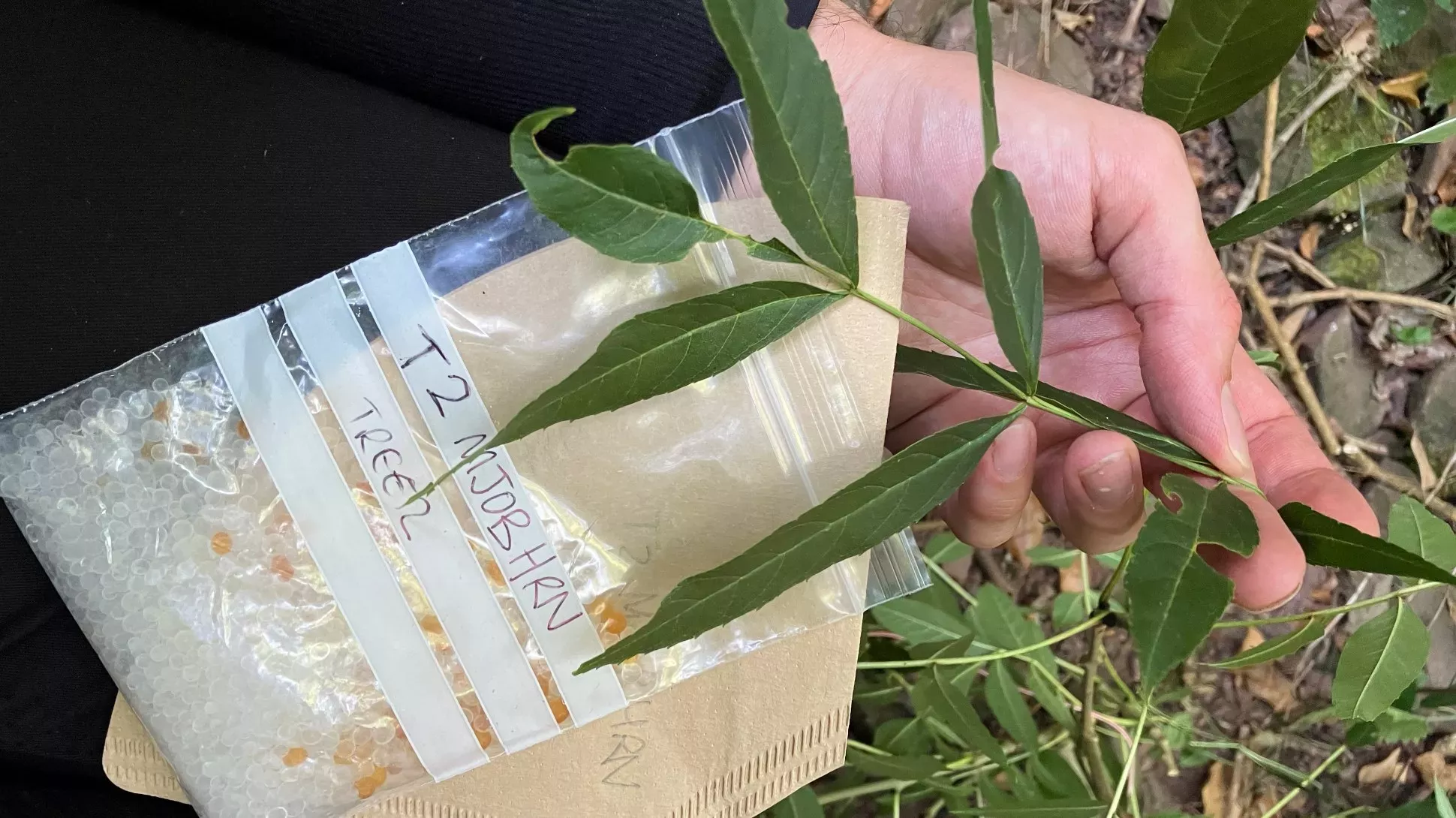11 November 2022
Adventures of a seed collector
From Norway to Indonesia, we've been busy on expeditions across the globe to collect seeds for the Millennium Seed Bank at Wakehurst.

Over the summer, members of the Millennium Seed Bank (MSB) have been carrying out field work and visiting partners across the world.
From remote Norwegian islands to distant forest nurseries in Indonesia, hear from the teams behind these seed-collecting trips.

Svalbard, Norway
This summer, Seed Processing Manager Nicola Mills and Senior Research Leader Elinor Breman spent 11 days in Longyearbyen, Svalbard — the world’s northernmost settlement. A long way from the heatwaves across Europe this year, the average temperature was forecast to be around 5°C in 24-hour sunlight.
Longyearbyen is a unique place to collect plant specimens: you can't leave the main settlement without a rifle and flares to hand to keep polar bears at bay!
This project is funded by the Marris-Webbe Charitable Trust and was Kew's first trip to an arctic location.
The early spring this year meant that many plants had produced seeds when Nicola and Elinor arrived. Over eight days, they made 20 collections from the area surrounding Longyearbyen.
These included the Svalbard poppy (Papaver dahlianum), Arctic cottongrass (Eriophorum scheuchzeri), and the polar willow (Salix polaris) which is a low, creeping shrub, less than 5cm tall – quite different from the willow trees we know in the UK!


The team scaled the valleys up into the glaciers, and right down the coast of the fjord.
All plants that were collected were less than 20cm tall, which meant a lot of bending down and kneeling. The main competition for the seeds seemed to be the hungry reindeer and geese often found nearby!
The seed collections, and their accompanying herbarium specimens. will soon arrive back in the UK to process and store at the MSB. Half of each seed collection, and a herbarium specimen, will also be kept at the National Seed Bank of Norway as a back up.

United Kingdom
Project Officer Owen Blake and Field Officer Matthew Jeffrey have been revisiting maternal ash trees which have already had their seed collected and banked at the MSB.
The goal was to score them for their tolerance to ash dieback in the hope of discovering that some resilient collections are stored in the MSB.
Ash dieback, caused by the fungus Hymenoscyphus fraxineus, blocks water and nutrients moving through the tree, which leads to leaf loss, bark lesions and then the dieback in the crown of the tree itself.

Across Exmoor, Dartmoor and the Shropshire Hills, the pair have also been looking for additional ash trees displaying tolerance, collecting DNA samples for sequencing, and tagging these for later seed collection.
On their travels, Owen and Matthew also made a collection of alder buckthorn (Frangula alnus) in Dartmoor, with help from colleagues in Natural England, to fill gaps left in the UK National Tree Seed Project collections.


Indonesia
In August, Country Project Officer Ian Willey and Conservation Partnership Co-ordinator Kate Hardwick spent two weeks visiting seed banks across Java and Bali, along with a stop at Mount Ciremai National Park.
The Indonesian National Research and Innovation Agency (BRIN) have been partners with the MSB since 2016 and are committed to seed conservation as a tool for protecting the country’s extraordinary biodiversity.
BRIN has four wild species seed banks at Bogor, Cibodas, Purwodadi and Bali, and two active MSB Partnership projects underway aiming to collect and bank seeds from 1,100 species.
Ian and Kate worked with the team at BRIN to conduct MSBP Seed Conservation Standard reviews.

In between reviews, they also visited Mount Ciremai National Park, an area of montane forest which has experienced significant deforestation.
Indonesia ranks amongst the Food and Agricultural Organization of the United Nations' top ten countries in terms of net forest loss, making conservation of remaining forests, and restoration of degraded ecosystems, vital.
BRIN are addressing these challenges in collaboration with local partners through the Garfield Weston funded Global Tree Seed Bank Project. Ian and Kate worked with partners to identify methods for meeting their seed collecting targets — a significant challenge when collecting in dense tropical forest.
They also visited a new tree nursery at Kuningan Botanical Gardens, to advise on establishing nursery trials that can identify potential ‘framework species’ (plants that can grow well in deforested areas) and promote growth of a healthy ecosystem.
Amazing work is already underway with BRIN, and the MSB team are looking forward to continued collaboration that drives forward forest restoration within the National Park.

With our upcoming collecting trips to Armenia, South Africa and Australia, we are continuing to grow the Millenium Seed Bank as a bank of biodiversity, as well as a crucial research resource for scientists all over the world.
-

Global Tree Seed Bank Programme: Indonesia
Conserving Indonesia’s native trees via a programme of seed collection, extinction assessment and research into forest restoration programmes.
-

Threatened Biodiversity Hotspots in Indonesia
An ambitious programme of seed conservation, plant extinction assessments and research on the ecology, conservation and use of Indonesia’s native plants.
